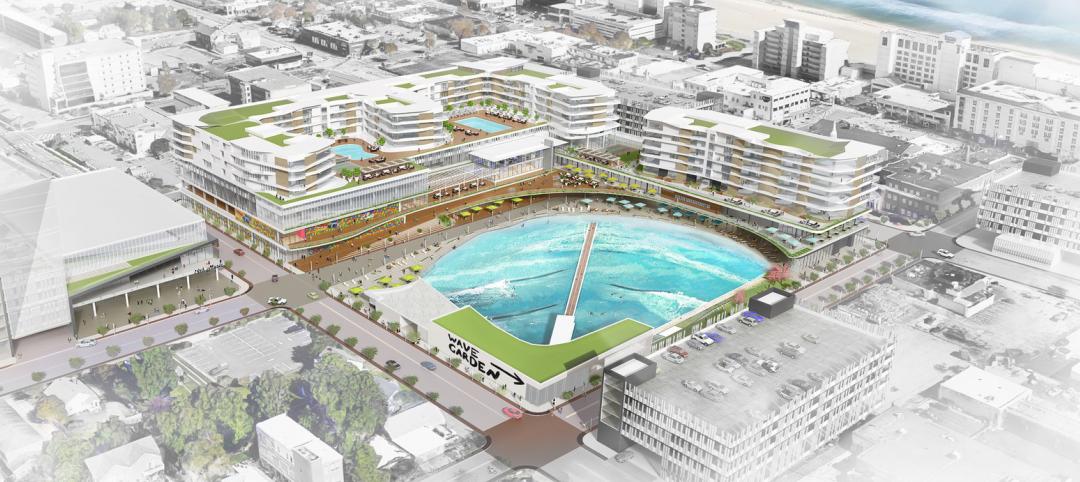America’s crumbling roads, decrepit bridges, aged water systems. Our deficient dams, underserved levees, and woeful wastewater treatment plants. For nearly three decades, the American public has heard ad nauseam about the dreadful condition of the nation’s infrastructure—from airports to railways to hazardous waste facilities.
Since 1988, the American Society of Civil Engineers, through its Infrastructure Report Card, has shone a spotlight on the alarming shortfall in funding and resources to operate, maintain, and modernize the country’s infrastructure network. ASCE’s latest report card, released in March, scores the nation’s overall infrastructure at a D+ (it’s never scored higher than C). The price tag to modernize the country’s infrastructure systems: a whopping $4.59 trillion over 10 years, more than triple the cost from the 2001 report.
Of the 16 infrastructure sectors that ASCE evaluates quadrennially, only one—K-12 schools—is buildings-focused. The trade group scored the nation’s 100,000 public school buildings at a collective D+, citing an annual investment shortfall of $38 billion to maintain and upgrade facilities and a backlog of necessary improvements (53% of schools require upgrades to reach “good” condition).
Left out of this ongoing national debate over infrastructure—and the trillions of dollars of public funding that is expected over the next few decades—are the nation’s other public buildings: the libraries, community centers, courthouses, community college buildings, affordable housing developments, and justice facilities.
These, too, are critical to the safety, security, and vibrancy of cities and communities. And as is the case with the nation’s public schools and major infrastructure sectors, these so-called “social infrastructure” buildings are being neglected, with years of deferred maintenance, patchwork repairs, dwindling CapEx and OpEx budgets, and even the weakening and repeal of building codes—especially those related to resiliency and sustainability.
Thrusting the nation’s social infrastructure into the spotlight has been a recent crusade of the leadership at the American Institute of Architects. AIA kicked off this initiative in November 2016 with a national poll of 2,108 U.S. adults to assess the importance of public buildings to their communities. The findings: more than 80% see public buildings as part of the nation’s infrastructure, and 94% agree that well-supported buildings are important to their communities (whether they’re willing to open their wallets to help fund such
efforts is another question).
AIA has had its share of controversy during the past 12 months, most notably the post-election statements that riled some of its members. But AIA leadership deserves a pat on the back for its efforts with this campaign. Let’s just hope their proclamation resonates with the nation’s policymakers.
Related Stories
Sports and Recreational Facilities | Jan 25, 2018
Virginia Beach: A surf town with a wave problem no more
A world-class surf park will highlight Virginia Beach’s new live-work-play development.
Multifamily Housing | Jan 24, 2018
Apartment rent rates jump 2.5% in 2017, led by small and mid-sized markets
The average price for one-bedroom units increased the most.
Architects | Jan 24, 2018
Danish design firm Schmidt Hammer Lassen Architects joins Perkins+Will
Partnership expands Schmidt Hammer Lassen’s capacity for international growth; complements Perkins+Will’s design philosophy and strengthens the firm’s cultural practice.
Hotel Facilities | Jan 24, 2018
U.S. hotel markets with the largest construction pipelines
Dallas, Houston, and New York lead the way, with more than 460 hotel projects in the works.
Architects | Jan 24, 2018
Strong finish for architecture billings in 2017
The Architecture Billings Index concluded the year in positive terrain, with the December reading capping off three straight months of growth in design billings.
Architects | Jan 19, 2018
CTBUH announces global finalist projects for annual awards program
The Lotte World Tower, in Seoul, and 150 N. Riverside, in Chicago, are among the finalists.
Architects | Jan 10, 2018
NELSON and FRCH Design Worldwide are merging
Their chief executives will manage the company jointly, by region.
Architects | Jan 10, 2018
7 steps to ending a low growth cycle
Here are the top 10 marketing techniques as rated by high-growth firms and how they compare to their no-growth counterparts.
Architects | Jan 8, 2018
ZGF Founding Partner Robert Frasca, 84, passes away
Frasca was a driving force in transforming the architectural firm from its early beginnings as a regional office into one of the nation’s largest practices, with 600 design professionals across six offices in the U.S. and Canada.
















